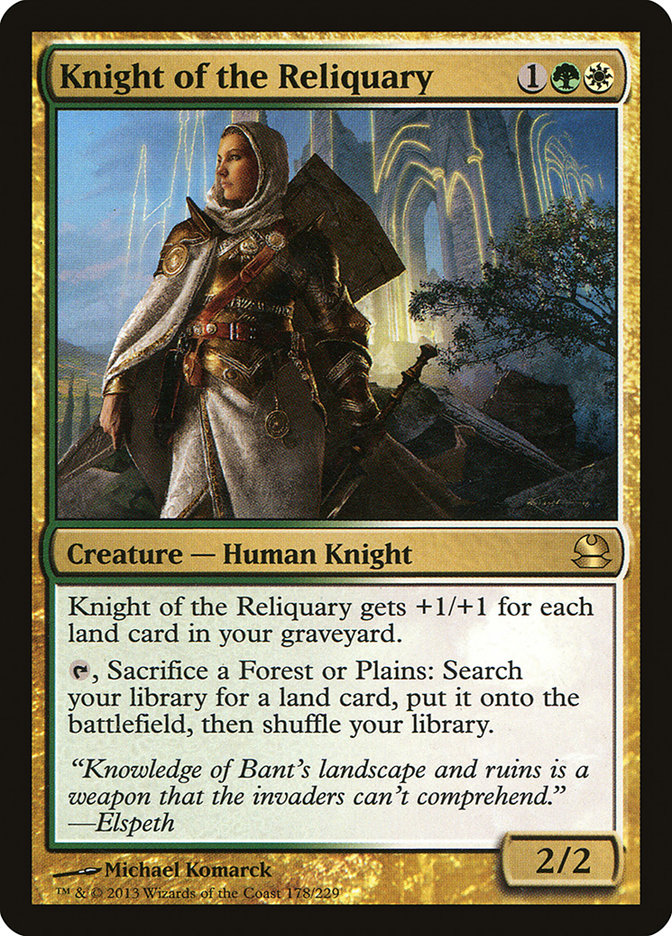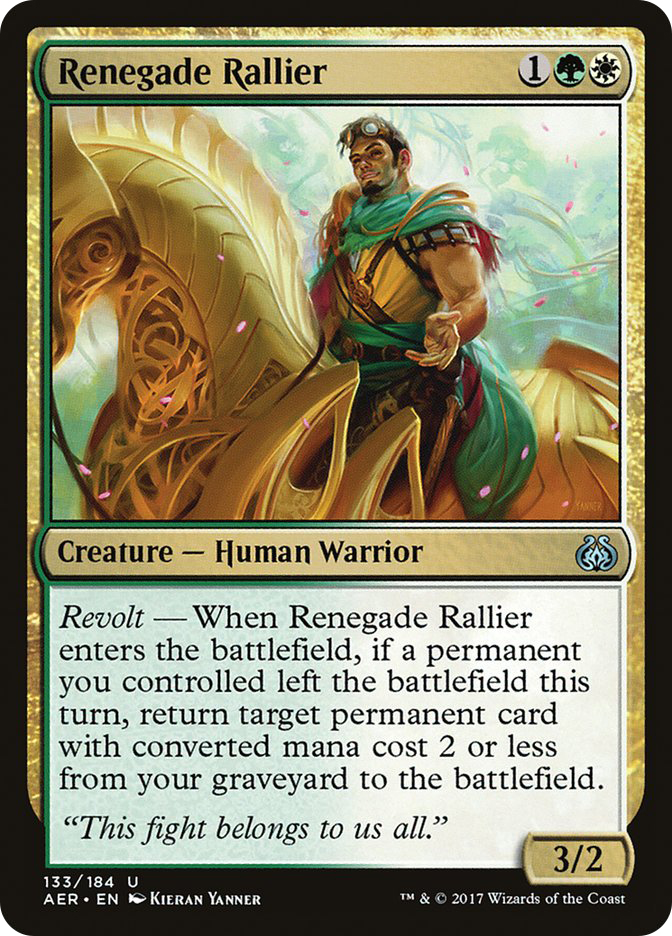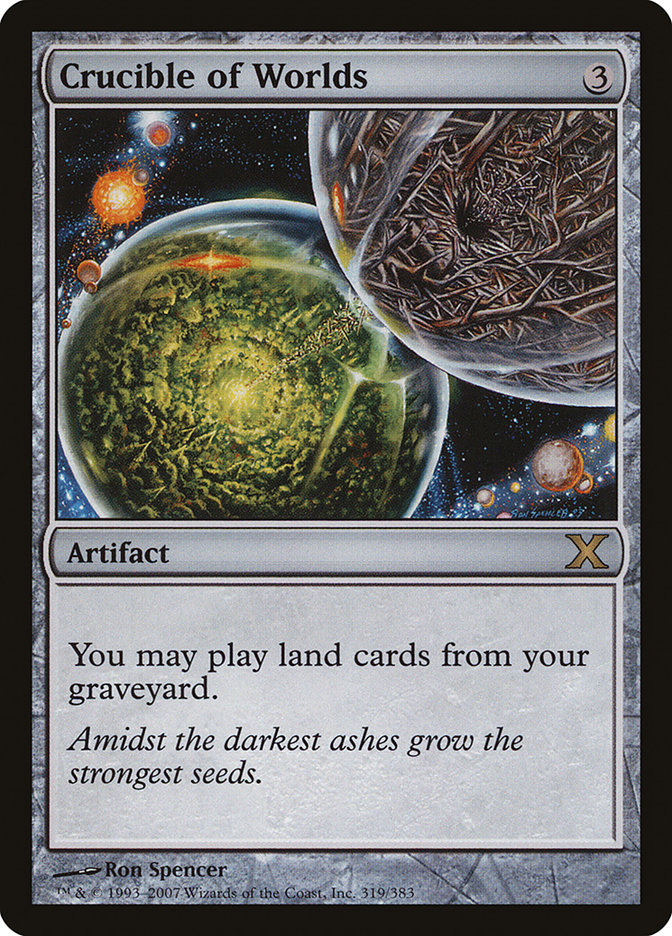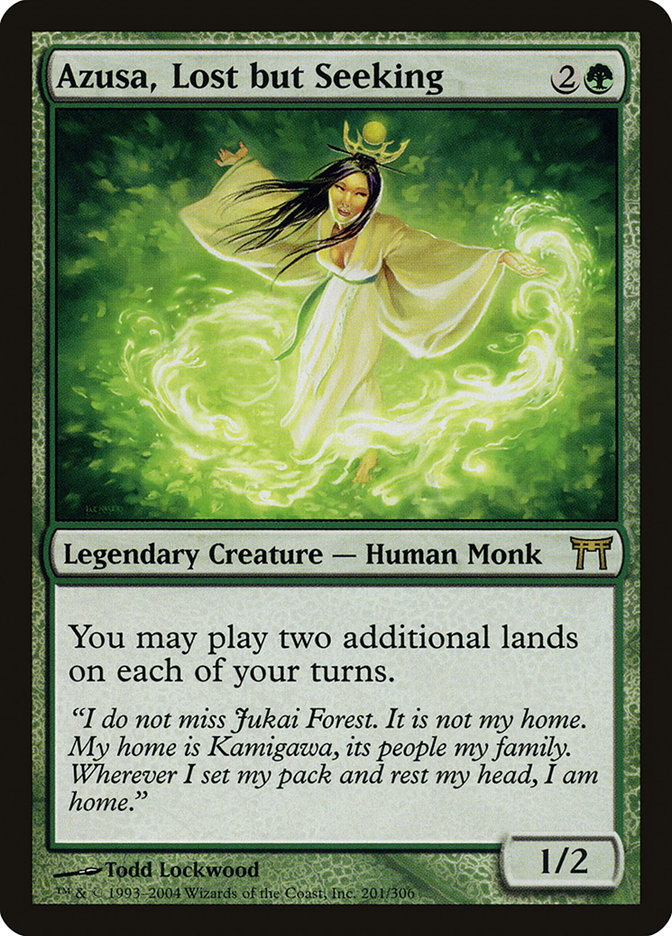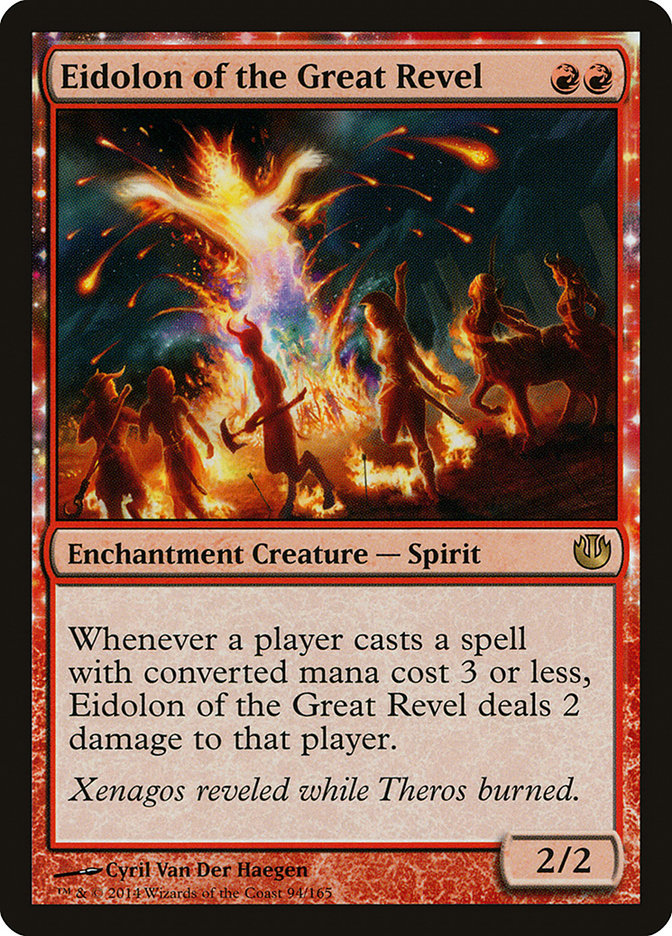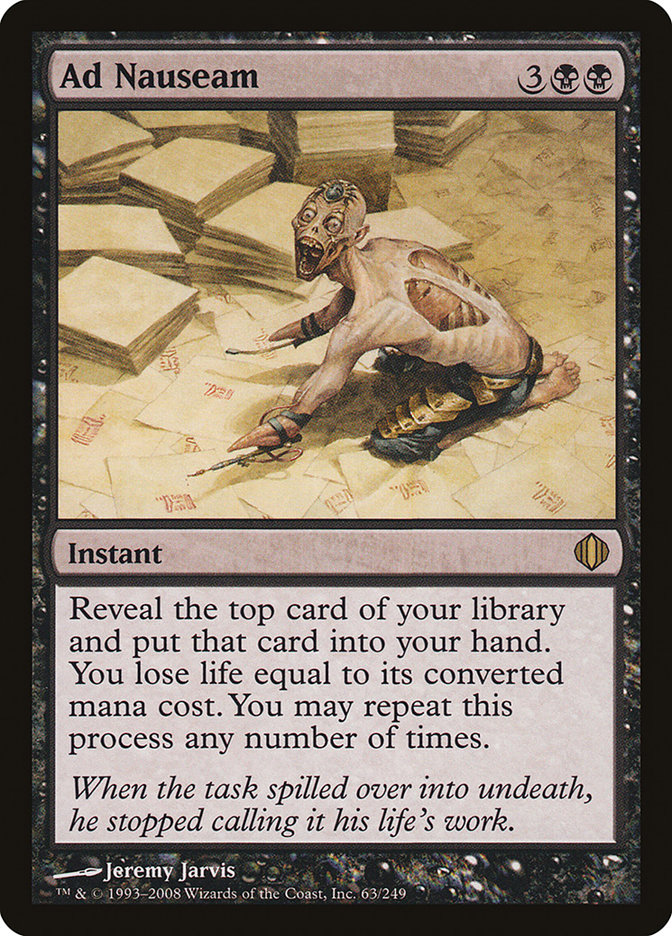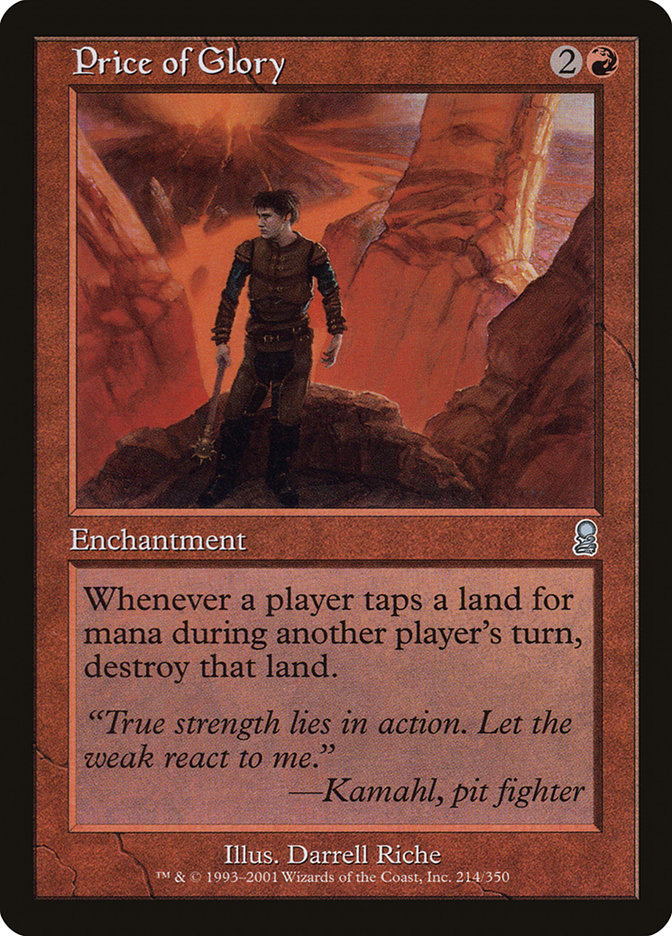#SCGDFW this past weekend was amazing. Not only did I get to play in an Open in my backyard for the first time in a while, but I also played an extremely fun home brew to a great finish, losing in the first round of the Top 8 after being the first seed.
Last week I wrote that Modern is currently the greatest format, stating that you can play anything you want and it can win, and you’d better believe I was there this weekend to prove it. I wanted to build a deck around Courser of Kruphix, because the ability to know the top of your library and control your draw step is extremely powerful. In order to actually control the top card instead of just looking at it, you need a way to shuffle your own library. The most common way is fetchlands, but Knight of the Reliquary is also the perfect card when you want to keep reshuffling your library.
When having both on the battlefield, a common play is to use the Knight of the Reliquary to put a fetchland onto the battlefield, and then, if you still don’t like the top card after you shuffle the first time, fetch and reset again. With nothing else going on, this gives you three different chances to get a free land off the top of your library and set up a useful card. Once I knew I was going to building a deck based around Courser of Kruphix and Knight of the Reliquary, then Collected Company and Ghost Quarter were the next two very easy choices.
Collected Company is a pretty obvious inclusion, as it’s the most mana-efficient way to find more Coursers and Knights to put onto the battlefield. I also wanted a payoff for having the ability to find extra lands with Courser and Knight, and Ghost Quarter is the best utility land in Modern right now. There are basically no decks in the format that have manabases built with being Ghost Quartered many times in a row in mind, evidenced by the low amount of basic lands throughout the format. Having only two or three basic lands seems like the norm these days, and I built a deck to attack that.
Creatures (27)
- 1 Azusa, Lost but Seeking
- 2 Birds of Paradise
- 4 Tarmogoyf
- 4 Noble Hierarch
- 4 Knight of the Reliquary
- 2 Scavenging Ooze
- 3 Voice of Resurgence
- 4 Courser of Kruphix
- 1 Tireless Tracker
- 2 Renegade Rallier
Lands (23)
Spells (10)

Enter G/W Company, affectionately known as G/W Value Town. After our backbone of Courser of Kruphix, Knight of the Reliquary, Collected Company, and Ghost Quarter, we have a pile of similarly underplayed green and white cards that help with our overall strategy, which is to be a midrange deck that is built to attack our opponent’s manabase. This is quite a different strategy than normal, as attacking an opponent’s manabase is pretty uncommon. There’s G/R Land Destruction out on the periphery of the format, but besides that, it’s something that most players overlook when designing decks.
To help with our general game plan of maximizing our manabase while minimizing our opponent’s manabase, I added in the trio of Renegade Rallier, Crucible of Worlds, and Azusa, Lost but Seeking. Renegade Rallier is a no-brainer, as even something as simple as returning the fetchland that you crack when you cast the three-drop is quite useful in many ways, especially because Courser of Kruphix wants you to have as many fetchlands on the battlefield as possible to be able to control your draw step. The other two started in the sideboard, though, and were so impressive that I eventually had to put them into the maindeck.
Both of these cards are quite odd choices for a midrange Collected Company deck, but that’s not something to scare me away from them. These two cards are best when you have them together, but they are still serviceable in their own rights. Well, at least Crucible almost always is, but you really need either Crucible or Courser of Kruphix to be on the battlefield for Azusa to do anything. When you do, though, the amount of value you can get from the Azusa is unbelievable. So Azusa was either a one or a ten for me all weekend, but the upside is so unreal that I loved having it in my deck to steal some games.
Crucible of Worlds is similar, but more functional as a Magic card without its partner, Azusa. Even in “normal” midrange battles that go longer, Crucible of Worlds allows you to either replay fetchlands to continue to thin or reset the top of your deck, or you can replay a Horizon Canopy each turn to effectively draw two cards per turn. Again, there’s plenty of downside with a card like Crucible of Worlds as well, but the rest of the deck was built to be as consistent as possible to be able to mitigate the risk of playing these two cards.
Originally in the sideboard as I mentioned before, the main use of Crucible of Worlds and Azusa, Lost but Seeking was to attack the unfair decks such as Ad Nauseam, Tron, and Valakut, and I was frequently sideboarding them in for my worst matchups. Other midrange and aggro decks were quite good matchups, however, and once I realized I could win those matchups anyway even with these two cards in my maindeck, they moved in for good.
Frequently Asked Questions
This deck was definitely a home brew of mine, and it’s rare to see a home brew do well at a major event like #SCGDFW. Because of this, I was asked lots of questions throughout the two days from other players who were interested in the deck, and I also went to social media to field some more questions. So instead of doing a sideboard guide for the deck, I wanted to touch on many of the common questions to hopefully help your own deckbuilding prowess in the future.
Why did you play G/W Company this weekend?
Most people were surprised that I wasn’t playing Eldrazi Tron, especially with how well I’ve been doing recently with the deck, and so the most common question was basically, “Why did I put the deck down?”
Nothing against Eldrazi Tron; I still think it’s very powerful and I’m sure I’ll be playing it again soon, but I thought at G/W Company was better-positioned for this weekend, even though it wasn’t the safe choice. Tom Ross put it best, as he told me I would most likely get top 16 with Eldrazi Tron, but I didn’t have a good chance at winning the tournament. With G/W Company, on the other hand, I had a much better chance of winning the tournament or I could get dead last. These are the types of decks that Tom traditionally loves to play, and he convinced me to go for it at #SCGDFW.
How do you determine what will be good for an upcoming weekend?
Well, I just mentioned that I thought G/W Company would be better than Eldrazi Tron for #SCGDFW, but why did I think that? It all starts with Level 0 of the format, Death’s Shadow. Death’s Shadow is turning into the most popular deck of the format, and I expected to see plenty of it throughout the tournament. Advantage G/W Company, as it’s heavily favored against Death’s Shadow, while Eldrazi Tron is an underdog. After that, Level 1 was to bring heavy-removal midrange decks such as Abzan and Grixis. At #SCGINDY two weekends before, we saw an Abzan player beat Michael Majors on Death’s Shadow during the Top 8, and with that showing I believed Abzan would be a popular choice for the weekend. Both Eldrazi Tron and G/W Company can handle these midrange decks quite well, so not much was moving the needle either way. Finally, Dallas is known to be a very aggressive town, and it showed as I played against Burn three times in the Swiss and two Burn decks made Top 8. Burn is another tough matchup for Eldrazi Tron, while G/W Company has a somewhat favorable matchup.
Eldrazi Tron is a much better deck at fighting the unfair decks of the format with access to the four copies of Chalice of the Void, but I was hoping Death’s Shadow decks could keep them in check. I was definitely worried about Ad Nauseam, especially because it won #SCGINDY, but I didn’t expect to play against it more than one time. Turns out I did face it once, and it was my only loss in the Swiss.
What other cards did you try that didn’t make the cut?
Collected Company decks have a greater ability to play a variety of creatures with a realistic expectation that you’ll see them an acceptable number of times throughout the tournament. To this end, I’ve had people ask about what other cards I tried but ultimately fell short of the final list. I really like both Tireless Tracker and Renegade Rallier in the deck, and honestly wish I had another copy of each. Those were the two cards that I cut to make room for the Azusa, Lost but Seeking and the Crucible of Worlds in the maindeck. Other maindeck cards that I tried include:
Where does the card advantage come from with cards that don’t say “draw a card”?
With only Horizon Canopy and Tireless Tracker mentioning drawing cards, and with Renegade Rallier as the only creature that has an enters-the-battlefield effect, the card advantage aspects of this deck may not be clear to some people. The biggest card advantage card, and basically the most important card in almost every matchup, is Courser of Kruphix. I talked before in the article of why Courser of Kruphix is so good, and each time you can get a free land off the top of your deck, it’s essentially drawing a card. Some people don’t believe deck thinning is real, but with Courser, Knight of the Reliquary, Crucible of Worlds, and Azusa, Lost but Seeking, it’s frequently possible to get most every land out of your deck during the match. So while your opponents are still drawing lands a decent amount of the time in the late game, you’re only drawing spells to help you pull ahead. If you have Knight of the Reliquary and Courser of Kruphix both out as well, you can truly control your draw step as mentioned before, which makes that particular two-card combo one of the best value engines in Modern.
What would you change moving forward?
Honestly, nothing. The list played out exactly how I planned it to, and I was very happy with all of my card choices. Aven Mindcensor in the sideboard didn’t exactly do much; I only cast it one time to block a Vault Skirge against Affinity, but I won that close Game 3 because of it. It’s in the sideboard to fight Valakut decks, which I thankfully didn’t have to face.
Is a budget list available?
This was by far the most common question I’ve heard from other players, and with good reason. This deck isn’t cheap, with Tarmogoyf, Noble Hierarch, Horizon Canopy, Crucible of Worlds, and Engineered Explosives all at $50 or more. In fact if you would buy the entire decklist, it would be the most expensive deck in the Top 32 of #SCGDFW.
I think the easiest way to make the deck cheaper while still keeping it quite competitive to remove the two copies of Crucible of Worlds, the two Engineered Explosives, one Horizon Canopy, and the Azusa, Lost but Seeking. I would replace them with another Renegade Rallier, Tireless Tracker, and Forest in the maindeck, with a fourth Stony Silence, Eidolon of Rhetoric, and a second Qasali Pridemage in the sideboard. You’d be worse against the big mana decks, but overall this wouldn’t change the deck too terribly much.
If you need to go even more budget, however, you could switch the numbers of Birds of Paradise and Noble Hierarch to start with. Tarmogoyf is so incredibly hard to replace, as there is just not a two-drop that compares to it, but if I had to take them out, I would add a fourth Voice of Resurgence, a third Scavenging Ooze, a Qasali Pridemage, and a Selfless Spirit.
Another option is to play G/R Land Destruction, which is a somewhat similar deck at a third of the cost.
Creatures (13)
Lands (20)
Spells (27)

This was Gordon Clinard’s ninth-place list, barely missing out on Top 8 due to tiebreakers. I think it’s a solid deck with some potential. Here’s the version of G/R Land Destruction that I’m working on.
Creatures (19)
- 2 Birds of Paradise
- 1 Acidic Slime
- 4 Arbor Elf
- 3 Inferno Titan
- 2 Huntmaster of the Fells
- 1 Thragtusk
- 4 Courser of Kruphix
- 2 Whisperwood Elemental
Planeswalkers (2)
Lands (20)
Spells (19)

Blood Moons? Random four- and five-mana mythics? Now this is my kind of deck. There aren’t as many lands in this deck to make Courser of Kruphix reliably hit one, but it works well with Chandra, Torch of Defiance to let you know what’s on top of your library.
#SCGDFW was probably my favorite SCG Open that I’ve ever played, and although the success I had was certainly part of it, and with a fun home brew, it wasn’t everything. There was also the fact that it was in my hometown per se, which made it nice to be able to spend the weekend with friends that don’t usually get to travel to the other Opens. But most importantly, I had more people come up and introduce themselves to me than at all the other Opens this year combined, and I loved meeting each and every person. I’m really glad that so many people enjoy the content that I produce both here on StarCityGames.com and on my Twitch stream, and I’m truly blessed to be able to do so.
With that, I’d like to thank everyone who came up and said hi this past weekend for making it an unforgettable one for me. I appreciate all of the support that you give me, and I already can’t wait to get back on the road for the next stop on the SCG Tour.



